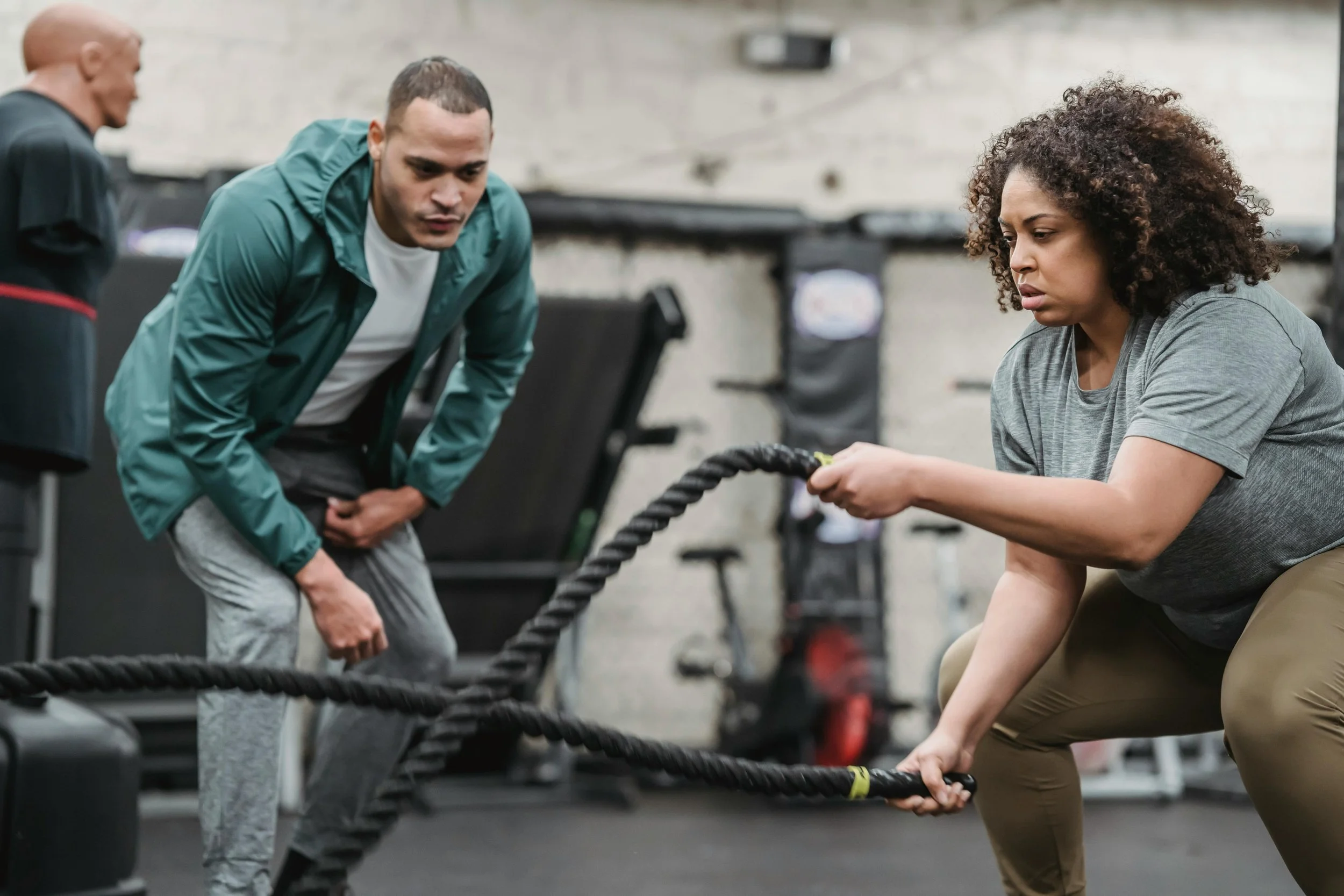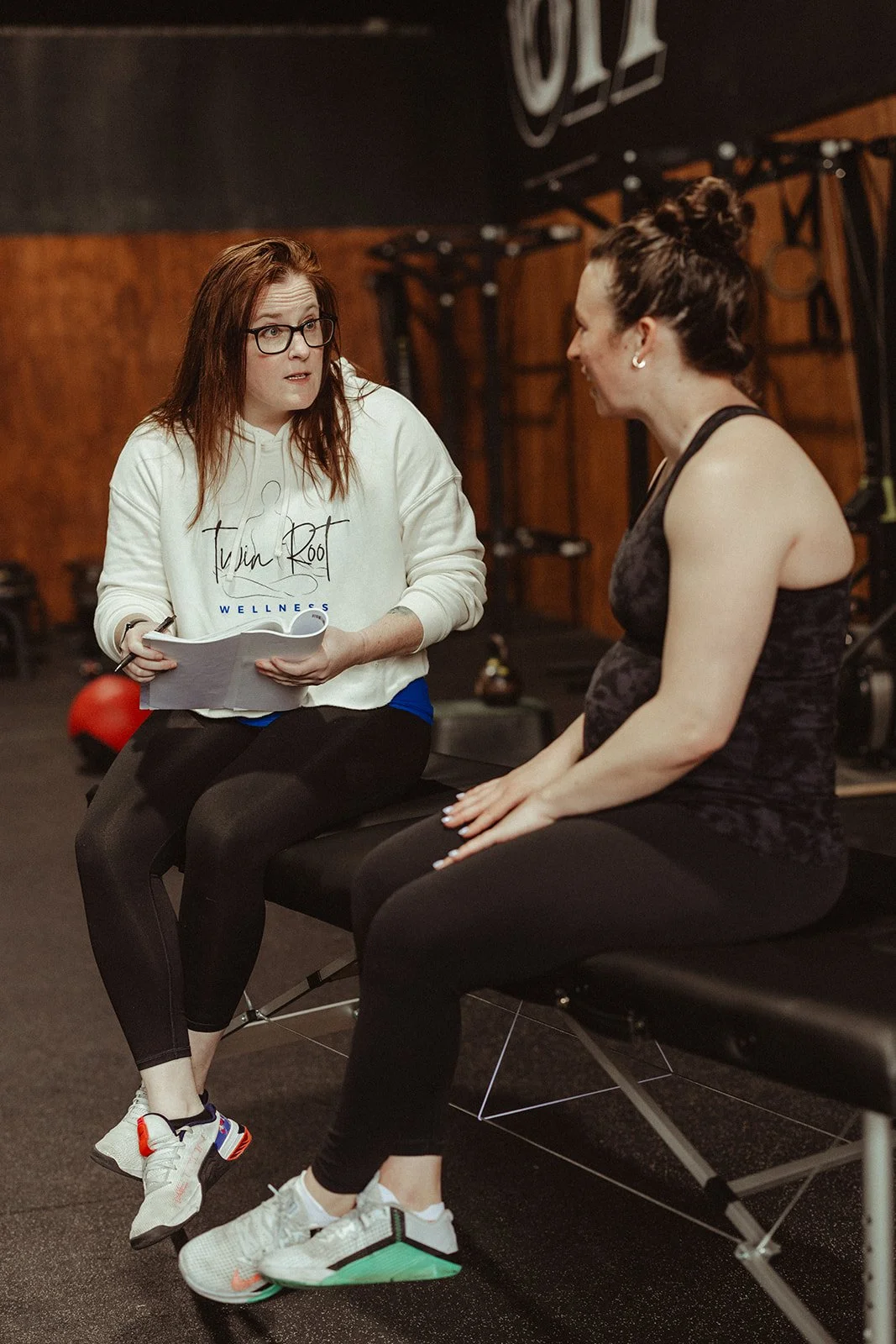CrossFit training program and modifications for the postpartum athlete
Continuing a CrossFit training program after pregnancy and giving birth is empowering for many female athletes. However, it's essential to listen to your body, ease back into intense workouts, and modify exercises to accommodate the healing process and any physical changes that occurred during pregnancy and childbirth. Below, we’ll explore modifications for four popular CrossFit workouts: Annie, Helen, Fran, and Murph, with a focus on scaling to meet postpartum athletes' needs.
Standard Annie
50-40-30-20-10 Reps For Time
Double-Unders
Sit-Ups
Postpartum Modifications:
Rather than attempting double-unders, start with single-unders or even low-impact options like air squats or step-ups. This reduces stress on the pelvic floor, especially in the early stages of recovery.
Sit-ups can be challenging for postpartum athletes, particularly if they’re dealing with abdominal separation. You can replace sit-ups with:
Dead Bugs: A core-friendly movement that focuses on reconnecting the core.
Plank Shoulder Taps: Emphasizes stability without direct pressure on the abs.
Bird Dogs: Focuses on building core and back strength, which can be weakened during pregnancy.
Standard Helen
3 Rounds For Time
400 meter Run
21 Kettlebell Swings (1.5/1 pood)
12 Pull-Ups
Postpartum Modifications:
Running can place stress on the pelvic floor, so consider replacing the 400m run with a brisk walk or incline walk on a treadmill, biking, or rowing. These are lower-impact cardio options that are gentler on both the joints and the pelvic floor.
Consider using lower weight for the kettlebell swings and focus on your form by engaging the core and glutes. If kettlebell swings feel too intense, consider trying:
Russian Kettlebell Swings (eye-level only).
Dumbbell Deadlifts: A hip-hinge movement that’s more controlled.
Pull-Ups: Pull-ups may feel too intense initially, especially for those with weakened upper-body strength or diastasis recti. Modify by:
Ring Rows: A scaled version that allows for core engagement while reducing strain.
To complete the pull-ups, you can support some of your body weight using a band or machine.
Standard Fran
21-15-9 Reps for Time
Thrusters (95/65 lbs)
Pull-Ups
Postpartum Modifications:
You can modify thrusters by using a lighter barbell or dumbbells. Focus on maintaining good posture, keeping your chest up, and engaging your core. If squats feel too demanding on the pelvic floor, you can swap them for:
Goblet Squats: A single kettlebell or dumbbell held at chest level.
Air Squats: Bodyweight squats with a focus on depth and form.
Just like we recommended in the Helen workout, you can sub pullups for assisted pull-ups using a band or machine.
Standard Murph
For Time
1 mile Run
100 Pull-Ups
200 Push-Ups
300 Air Squats
1 mile Run
Postpartum Modifications:
Like we’ve already covered, swap the run for lower-impact cardio like crowing, biking, incline walking, or whatever feels best for your body.
As with Helen and Fran, modify pull-ups with bands or a machine.
You can scale pushups by using:
Incline Push-Ups: Using a bench or box to reduce the pressure on the core.
Wall Push-Ups: A gentler option to ease into upper body strength.
If air squats feel too strenuous, consider using a box or bench to squat to a controlled depth. This modification helps prevent overloading the pelvic floor while maintaining good movement patterns.
We’re so psyched you’re getting back into your CrossFit training program
In any of these workouts, feel free to break the workout up into smaller, more manageable sets, especially if you feel muscle fatigue setting in.
Returning to CrossFit postpartum is a personal journey. It’s essential to approach these workouts with patience, care, and the modifications you need to suit your body’s needs.
You can totally maintain your fitness while honoring your recovery process. Remember, there is no rush—strength and intensity will come with time. Prioritize safe, gradual progress and always consult with a healthcare professional before resuming intense workouts.
Remember, there is no rush—strength and intensity will come with time. Prioritize safe, gradual progress and always consult with a healthcare professional before resuming intense workouts.
We’re here for you if you need more tips or advice during this process.



